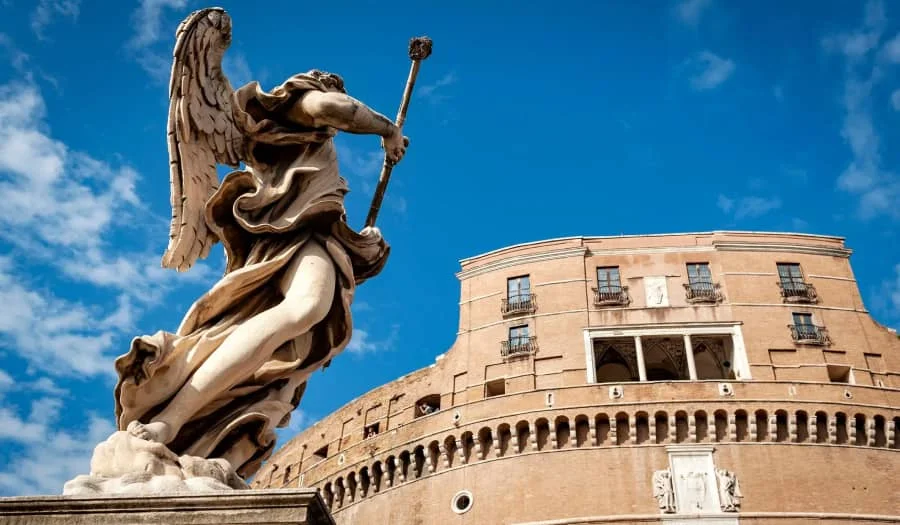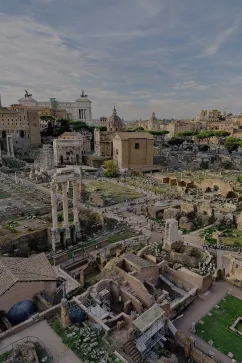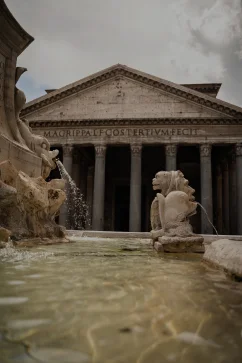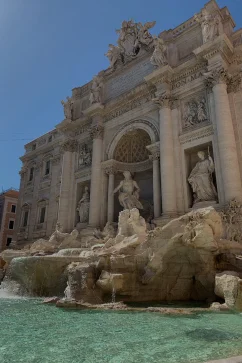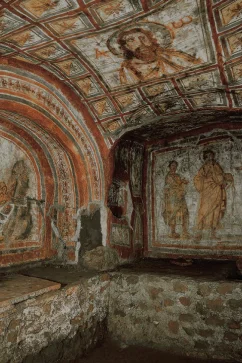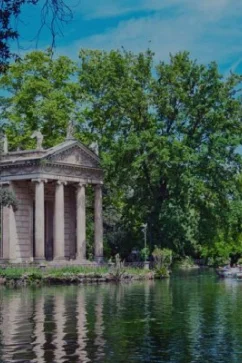Castel Sant Angelo
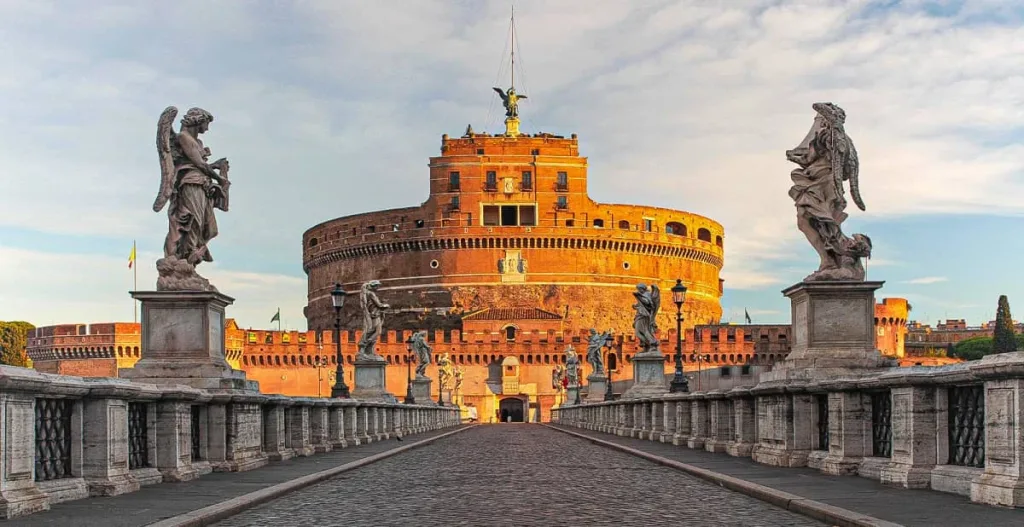
About the Castel Sant Angelo
Castel Sant’Angelo, originally known as the Mausoleum of Hadrian, is an iconic landmark in the heart of Rome. This ancient structure stands as a testament to Roman engineering and architectural prowess. Commissioned by Emperor Hadrian in the 2nd century AD, it was intended as a mausoleum for himself and his family.
Inside Castel Sant’Angelo, visitors can explore its rich history through the Museo Nazionale di Castel Sant’Angelo. The museum houses a diverse collection of artifacts, artworks, and historical exhibits that shed light on the castle’s multifaceted past. Its thick, imposing walls and defensive features, such as battlements and a drawbridge, reflect its military past. The castle is also famously connected to the Vatican City via a secret corridor known as the Passetto di Borgo, used by popes as an escape route during emergencies. This connection adds to the castle’s historical significance.
Today, Castel Sant’Angelo houses the Museo Nazionale di Castel Sant’Angelo (National Museum of Castel Sant’Angelo). Visitors can explore its interior, including papal apartments, prisons, and exhibitions displaying art and artifacts related to its history.
History of the Castel Sant Angelo
Castel Sant’Angelo history dates back to a time spanning nearly two millennia. Originally commissioned by Emperor Hadrian in the 2nd century AD as a mausoleum for himself and his family, the structure was adorned with lavish decorations and sculptures.
As the Roman Empire waned, Castel Sant’Angelo took on a more practical role, evolving into a formidable fortress. The castle played a vital role in protecting Rome during various conflicts and sieges throughout the Middle Ages. In 1277, a defensive passage of 800 meters was constructed between the castle and Vatican City to ensure the Pope could safely flee the palace in the case of an attack. In 1527, while Rome was under siege, Pope Clement VII took sanctuary in the castle.
Over time, the castle evolved further, serving as a papal residence, prison, and treasury. Today, it stands as a museum, housing a diverse collection of art, historical artifacts, and exhibits that illuminate its captivating past and its enduring significance in the heart of Rome.
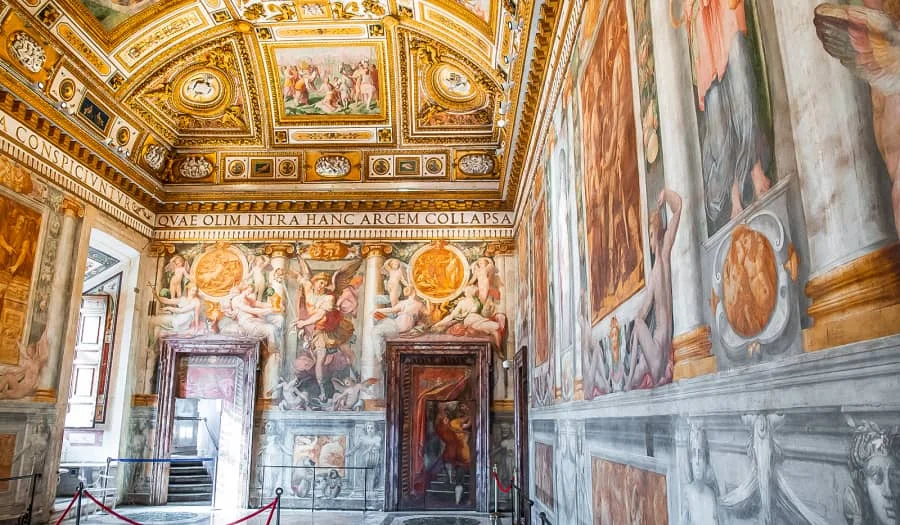
Tips for your visit
- Ticket and Hours: Check the Castel Sant Angelo’s opening hours and ticket prices beforehand. Consider purchasing Castel Sant Angelo tickets online in advance to avoid waiting in long lines.
- Historical Significance: Familiarize yourself with the historical significance of the monument, from its origin as a mausoleum of Hadrian to its transformation into a fortress and later a museum.
- Explore Inside: Take your time exploring the Castel Sant Angelo from inside. Visit the papal apartments, the prison cells, and the various exhibitions in the Museo Nazionale di Castel Sant’Angelo to gain a deeper understanding of its history.
- Enjoy the Views: Ascend to the top terrace for panoramic views of Rome, including St. Peter’s Basilica and the Tiber River. It’s a fantastic spot for photographs.
- Passetto di Borgo: Learn about the Passetto di Borgo, the secret corridor that connected the castle to the Vatican. Its historical importance is fascinating.
- Comfortable Footwear: Wear comfortable walking shoes, as you explore different levels and rooms within the castle.
- Multilingual Guide: Consider renting an audio guide or hiring a tour guide to enhance your understanding of the castle’s history and significance.
- Visit Off-Peak: To avoid crowds, visit early in the morning or late in the afternoon. Castel Sant’Angelo can get crowded, especially during peak tourist season.
- Respect Cultural Norms: Remember that this is a historical site, so be respectful of the architecture and artifacts. Photography is typically allowed but be mindful of flash usage.
- Plan Nearby Attractions: Consider combining your visit with nearby attractions like St. Peter’s Basilica or the Vatican Museums, as they are within walking distance.
Tickets
Explore Castel Sant Angelo, the historic mausoleum and fortress in Rome, with ticket options to suit your preferences. The regular admission ticket is 20€, while the Castel Sant Angelo ticket with an audio guide is 24€ for a deeper experience. Children aged 0–17 can enter for just 3.50€. For an exclusive journey, consider the “Secrets Beneath Castel Sant’Angelo” guided tour at 61€. Book your Castel Sant Angelo tickets today and uncover the secrets of this remarkable landmark.
How to arrive
You can reach Castel Sant Angelo in Rome using various transportation methods. Choose the transportation option that suits you best, and enjoy your visit to Castel Sant’Angelo.
By Metro: Take Line A of the Rome Metro and get off at the Lepanto station. From there, it’s about a 10-minute walk to the castle.
By Bus: Several bus lines have stops near Castel Sant’Angelo, including lines 40, 64, 190F, and 982.
By Tram: Tram Line 19 stops at Piazza Pia, which is very close to Castel Sant’Angelo.
By Taxi: You can easily find a taxi in Rome to take you to Castel Sant’Angelo. But this is an expensive option.
